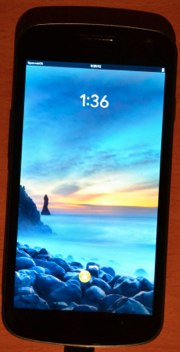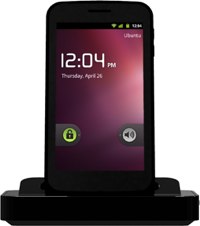Editor’s Note: This article is part one of a two-part series by Eric Brown exploring Linux-based alternatives to the Android mobile operating system. Part two takes a closer look at Firefox OS, Open WebOS, Sailfish, Tizen, and Ubuntu: 5 Mobile Linux OSes that Dare to Compete With Android.
So far, there has been but one big mobile Linux success story: Android. It has come to dominate the smartphone world and is rapidly closing the gap on tablets. While Android has an open source license, Google’s open governance policy has been spotty, inspiring a stream of new mobile operating systems from developers who are more FOSSy about their mobile devices. The projects are typically backed by mobile device vendors and carriers looking for more autonomy from Google and Apple.
 The first generation of mobile Linux contenders floundered under the combined juggernaut of Android and Apple’s iOS, which together have also flummoxed proprietary platforms like Microsoft’s Windows Phone and RIM’s BlackBerry. Yet, growing patent litigation has increased the willingness to invest in alternatives. Android vendors worry that Google may favor its Motorola subsidiary, and they are already chafing at Google’s delays in releasing Android updates. Both vendors and carriers are looking to more open and customizable platforms as the means to establish their own branding.
The first generation of mobile Linux contenders floundered under the combined juggernaut of Android and Apple’s iOS, which together have also flummoxed proprietary platforms like Microsoft’s Windows Phone and RIM’s BlackBerry. Yet, growing patent litigation has increased the willingness to invest in alternatives. Android vendors worry that Google may favor its Motorola subsidiary, and they are already chafing at Google’s delays in releasing Android updates. Both vendors and carriers are looking to more open and customizable platforms as the means to establish their own branding.
Unlike their more stable server and desktop cousins, mobile Linux operating systems (OSes) have existed in a topsy-turvy world where platforms rarely reach shipping products, but never really die. Instead, they continually break apart and recombine like 60’s super groups or adolescent planets.
Yet there are signs that those planets are starting to mature and solidify. By this time next year, a variety of phones should be available running mobile-ready Linux operating systems such as Tizen, Firefox OS and Jolla’s MeeGo-based “Sailfish.” New devices may arrive by then for Ubuntu and Open WebOS, as well.
Most of these projects are partial re-spins of earlier efforts. Recombinant code from one of the original Linux mobile projects — LiMo — helps to make up Tizen, and Jolla is recasting MeeGo’s Mer branch into its Sailfish operating system. Meanwhile, HP’s WebOS has been reborn as the open source Open WebOS, released as version 1.0 on Sept. 28. Even the “new” contender, Mozilla’s Firefox OS, is largely based on one of the most popular open source projects of all time: the Firefox browser.
App Gaps and Patent Slaps
All these platforms face huge barriers in breaking into the mobile world. In addition to taking on Google and Apple, they must compete with second-tier platforms such as Microsoft and RIM. Beyond the basic challenges of signing up key investors, vendors and carriers, the projects must quickly develop enough applications to compete with the huge libraries of Android and iOS. As Palm and HP discovered with WebOS, the lack of a sizable app library can kill you, especially on the high end.
The need for app diversity is somewhat less pressing on the low end, and indeed, most of the new open source players are initially debuting on affordable phones sold in emerging markets. At the very least, this lets them avoid competing with Apple. That strategy makes sense, but is far from foolproof. Android is already well established on the low end, having invaded much of Symbian’s feature-phone turf.
Finally, while the new mobile projects are designing firmware with an eye toward limiting liability, none are immune to patent attacks. Should one of these OSes manage to carve off a few percentage points of market share, the patent lawyers will be ready to pounce.
HTML5 Shines a Light
So far, Tizen appears to have the greatest vendor and carrier backing. Hosted by the Linux Foundation, Tizen is principally supported by Samsung and Intel. Samsung may be the leading vendor of Android devices, but that hasn’t stopped it from previously pursuing its own feature-phone targeted Bada OS. Bada has faded, but Samsung is actively working to integrate Bada code in Tizen.
Following Apple’s successful lawsuit against its Android products, Samsung has more motivation than ever to promote another, more robust alternative. The first Samsung-built Tizen phones are expected by early next year. Intel has also invested in Android, to the point that there are now a half dozen Intel Atom-based Android phones on the market, but the chipmaker is always looking to stake a claim on the next big platform.
Another mobile vendor that has thrived with Android — China’s ZTE — is instead sampling Firefox OS, which like Tizen, is built on a foundation of HTML5. This next-gen web standard could help both projects hurdle the app barrier by turning the huge base of HTML-savvy web developers into app developers. Web-based apps should be faster to develop, and ideally, compatible with other HTML5 platforms.
Earlier this year, it was speculated that either Tizen or Firefox OS would be ideal candidates for a much-rumored Facebook-branded phone, especially since Facebook has invested heavily in HTML5. Yet in September, Facebook CEO Mark Zuckerberg not only said a Facebook phone “just doesn’t make any sense,” but also said “The biggest mistake we made as a company was betting too much on HTML5 rather than native.”
While a Facebook game-changer appears to be off the table, HTML5 still seems to be best choice for a forward-looking OS facing a steep app gap. Projects that are less focused on HTML5 will need other strategies to close that gap. Many of the 10,000 apps listed in the WebOS app catalog may well migrate to Open WebOS, with the help of HP’s newly open sourced Enyo 2.0 Javascript development environment. Jolla, meanwhile, has said it may adopt OpenMobile’s Application Compatibility Layer (ACL) for Sailfish. ACL is claimed to run some 400,000 Android apps on top of MeeGo, Tizen, WebOS and other platforms.
 Canonical is pushing a two-pronged mobile strategy for Ubuntu. With its ARM-compatible, touch-enabled Unity UI layer, Ubuntu can run on tablets, at least in rudimentary form, and will be optimized for the form-factor by 2014, says Canonical. That future release will also support smartphones, but that may be a bit of a reach for this desktop-based distro. More immediately addressing smartphones, Canonical has sidestepped the app issue by announcing an OEM product called Ubuntu for Android that enables the two platforms to coexist simultaneously.
Canonical is pushing a two-pronged mobile strategy for Ubuntu. With its ARM-compatible, touch-enabled Unity UI layer, Ubuntu can run on tablets, at least in rudimentary form, and will be optimized for the form-factor by 2014, says Canonical. That future release will also support smartphones, but that may be a bit of a reach for this desktop-based distro. More immediately addressing smartphones, Canonical has sidestepped the app issue by announcing an OEM product called Ubuntu for Android that enables the two platforms to coexist simultaneously.
Should any of these open source contenders falter, others may be ready to take their place. On Aug. 7, the GNOME Foundation revealed plans for GNOME OS, a touch-enabled mobile platform due in 2014. GNOME OS is primarily intended as a development platform for GNOME desktop apps, but will also run as a standalone OS. This makes it a potential foundation for a mobile-ready Linux distro of the future.

